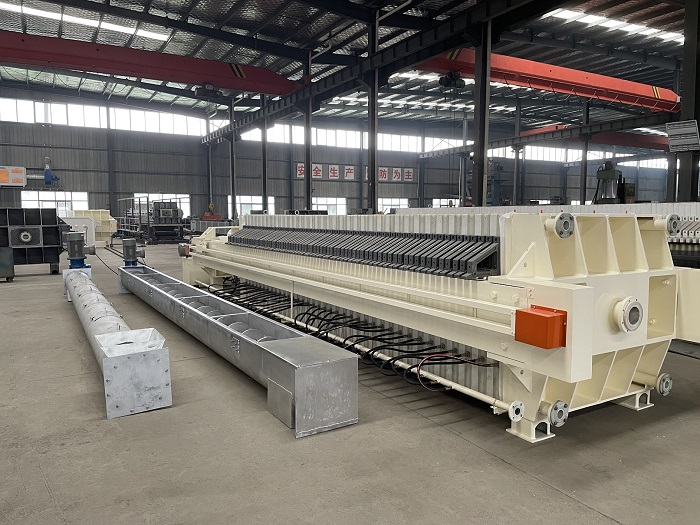
A filter press is an industrial equipment used for solid-liquid separation through pressure filtration. It efficiently separates suspended solids from liquids, producing a dry filter cake and clear filtrate.
It uses pressure to force liquid through filter cloths, trapping solids in chambers between plates. After forming a cake, the press opens to discharge solids. Its design and automation level vary, but it remains a cornerstone in industries requiring effective solid-liquid separation. Here's a detailed breakdown:
Components:
1. Plates and Frames:
- Recessed Chamber Plates: Form chambers when clamped together, where solids accumulate.
- Membrane Plates: Include inflatable diaphragms to compress the cake further.
- Filter Cloths: Attached to plates, allowing liquid passage while retaining solids.
2. Manifold (Feed and Discharge Ports): Channels slurry into chambers and directs filtrate out.
3. Hydraulic or Mechanical Closure System: Seals the plates tightly.
4. Feed Pump: Pumps slurry into the press under high pressure (typically 7–15 bar).
Working Principle:
1. Closing the Press: Plates are clamped together to form sealed chambers.
2. Filtration Phase:
- Slurry is pumped into chambers; solids build up on filter cloths.
- Liquid (filtrate) exits through cloths and plate drainage ports.
3. Cake Compression (Membrane Plates):
- Inflatable diaphragms compress the cake with air/water, reducing moisture.
4. Cake Drying: Residual liquid is drained, leaving a solid cake.
5. Cake Discharge:
- Plates separate, and cakes fall out (aided by vibration or manual removal).
- Automatic systems use plate shifters for efficiency.
Types of Filter Presses:
1. Plate and Frame: Alternating plates and frames for simple applications.
2. Recessed Chamber: Plates with recessed surfaces form chambers without frames.
3. Membrane (Diaphragm): Advanced compression for drier cakes.
Applications:
- Industries: Mining (tailings dewatering), chemical/pharmaceutical, food/beverage, municipal wastewater, oil recovery.
- Use Cases: Sludge treatment, pigment separation, juice clarification.
Advantages:
- High efficiency in dewatering; produces very dry cakes.
- Handles high solids concentrations.
- Flexible for diverse materials with adjustable pressure/cloth types.

If you are interested in our products, please leave us your email. We will send you the latest product information at irregular intervals.
 +86-374-8621628
+86-374-8621628 info@filterpresschina.net
info@filterpresschina.net Hexie Road, East Industry Park, Yuzhou City, Henan Province.
Hexie Road, East Industry Park, Yuzhou City, Henan Province.